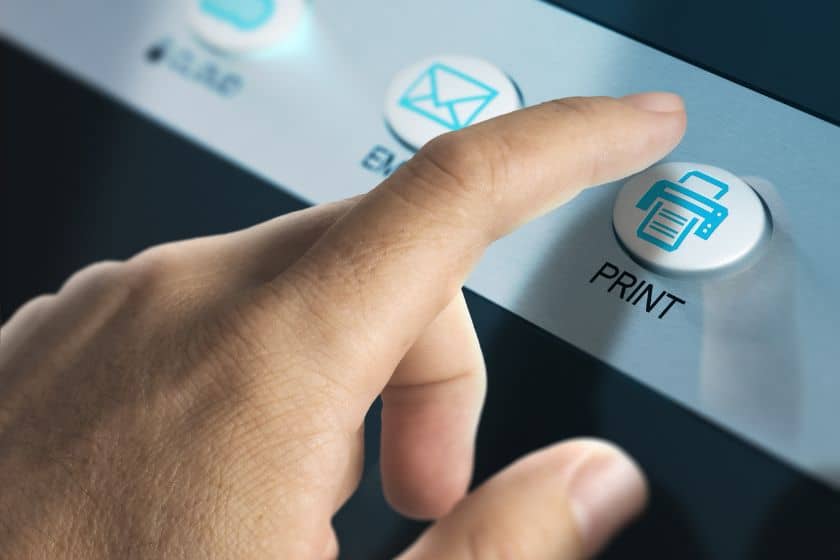When you’re scrolling through your favorite products online or flipping through a catalog, chances are you’re seeing digital printing at work. But what is digital printing, exactly? Simply put, it’s the modern way of transferring a digital image onto paper or other materials using a digital printer. As a result of this process, the printing industry has become more efficient and accessible for businesses and consumers alike.
Gone are the days of large, bulky printing presses that required intricate setups. With digital printing, the process is streamlined, faster, and easier for a variety of needs. This technology offers massive benefits, from the versatility of printing materials to the ability to customize prints on demand. Whether you’re printing a batch of marketing materials or getting your latest design out to the masses, digital printing is your go-to solution.
Let’s explore digital printing’s differences from traditional methods and discover how it’s changing the game. Read on to learn more about digital printing technology.
What is Digital Printing?
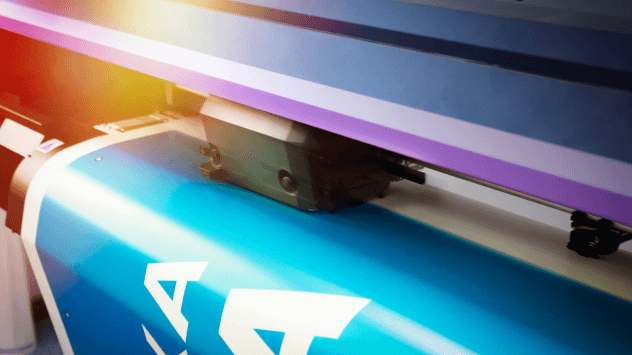
Digital printing is the process of creating a print directly from a digital file, bypassing the need for any physical printing plates or setup that you would find in traditional printing methods like offset printing. Whether you’re printing a handful of business cards, large posters, or a custom design, digital printing allows you to achieve high-quality results with minimal hassle.
If you’ve ever wondered what is a digital printer, it’s a device that reads digital files—such as PDFs or Photoshop designs—and transfers them directly to paper or other media. This technology eliminates many of the steps involved in traditional printing. A variety of digital printer types are available, including inkjet printers, laser printers, and specialized digital presses.
What Is A UV Digital Printer?
Digital UV printers are special types of printers that use ultraviolet light (UV) to cure ink as it is printed. With this approach, you will get sharper images and brighter colors that are durable and smudge-resistant. The unique aspect of UV printers is their ability to print on a variety of materials, including non-porous surfaces like plastic, glass, and metal, which traditional inkjet or laser printers can’t handle as easily.
These printers are ideal for businesses that require printing on different materials and want high durability for their printed products. From packaging to promotional materials, UV printing gives a polished, professional finish that can stand up to wear and tear.
-
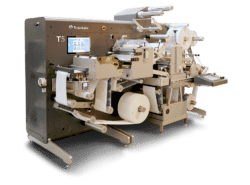 Trojan™ T5 Digital Presses
Trojan™ T5 Digital Presses
FREE SHIPPING over $199*
Orders before 12PM EST usually Ship Same Business Day -
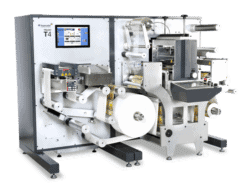 TrojanLabel™ T4 Digital Presses
TrojanLabel™ T4 Digital Presses
FREE SHIPPING over $199*
Orders before 12PM EST usually Ship Same Business Day -
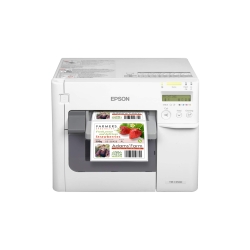 Epson ColorWorks C3500 Inkjet Color Label Printer SKU: C31CD54011 GTIN: 814420980046$2,419.00
Epson ColorWorks C3500 Inkjet Color Label Printer SKU: C31CD54011 GTIN: 814420980046$2,419.00
FREE SHIPPING over $199*
Orders before 12PM EST usually Ship Same Business Day
Digital Printing vs. Offset Printing
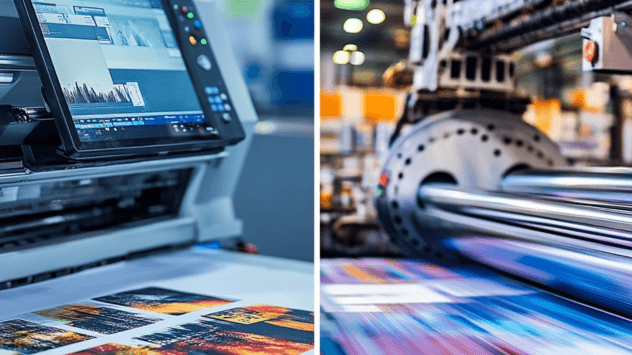
Printing with digital technology and printing with offset technology are two different approaches. Both have advantages and drawbacks.
Digital printing is fast, cost-effective, and flexible. It’s perfect for small to medium-sized jobs where customization is key. You can print variable data, such as personalized names or unique serial numbers, without much extra cost or setup time. The result is a high-quality material that can be used for direct mail campaigns or small-batch runs of high-quality materials like brochures.
Offset printing includes the need for plates and a longer setup time, but it is the best option for large print runs. A high-quality printer produces consistent color and sharpness that makes it ideal for the mass production of books and magazines. However, the setup time and cost for offset printing can be much higher than for digital printing.
In short, digital printing is often the best option for short runs, custom jobs, and projects with tight timelines, while offset printing excels in large-scale production.
Digital Printing vs. Screen Printing
There are two popular methods for printing fabric designs: digital and screen printing, but each is best suited to different projects.
Digital printing is the go-to for projects that require fine details and multi-color designs. It’s perfect for printing designs directly onto the fabric without screens or stencils. The designs are created digitally and then transferred to fabric, offering crisp results and precise color matching. Digital printing is also ideal for one-off custom designs or smaller runs.
During screen printing, stencils (or screens) are created for each color, and then ink is sprayed through the stencils onto the material. This method works best for larger print runs, particularly on textiles, and is well-suited to designs with limited colors.
Screen printing can achieve vibrant, durable results, but it can also be difficult and time-consuming to produce small quantities and detailed designs. Digital printing, with its speed and efficiency, has become the more popular choice for custom apparel printing and smaller production runs.
Digital Printer Vs. Inkjet Printer Vs. Laser Printer, Which One’s Better?
Now let’s look at what kinds of digital printers are currently available and see how they compare.
-
- Most homes and small offices use inkjet printers. They’re excellent for printing high-quality images and photos and work well for low-volume printing. Inkjet printers are versatile, as they can print on various types of paper, and some can even handle larger sheets for posters.
-
- Laser printers are best for printing text-heavy documents and high-volume prints. They use toner instead of ink, which makes them faster and more efficient than inkjet printers, especially for bulk printing. However, laser printers don’t typically produce the same level of color detail or image quality that inkjets can deliver.
-
- Digital presses are the real heavyweights of digital printing. Designed for high-volume, and high-quality printing, these machines have advanced features such as variable data printing and can print on a variety of substrates. Digital presses are designed for businesses that need a reliable solution for large-scale, professional printing.
Digital Printing Technology
With the advent of digital printing, businesses and consumers have changed the way they approach print projects. Digital presses, for example, can now print on various materials, including paper, plastic, textiles, and even metal, allowing companies to create custom products like branded packaging, promotional items, and more.
These presses can print directly from digital files, ensuring that each print is precise and consistent with the design. Digital presses are also faster and more cost effective than traditional methods, particularly for short runs or jobs that require variable data.
AccurioLabel 190 Presses
The AccurioLabel 190 is an excellent example of a digital press that delivers high-quality results for small to medium print runs. It can print on a variety of materials, including labels and packaging, making it perfect for businesses that need to produce professional-looking printed products without the high costs of offset printing.
AccurioLabel 230 Presses
The AccurioLabel 230 takes digital printing to the next level. This press offers even higher speeds and better color accuracy than the 190 model. With its wide range of customization options, it’s perfect for large-scale printing operations that need to handle complex designs easily.
Trojan T4 Digital Presses
For those who need a powerful performance in a compact package, the Trojan T4 digital press is a game-changer. The printer offers impressive print quality and efficiency while being simple to install and operate. This press is perfect for high-quality prints on a variety of materials and is suitable for businesses that want to scale up their printing operations.
Trojan T5 Digital Presses
The Trojan T5 is a top-of-the-line digital press, offering even greater efficiency and customization options than the T4 model. With its ability to print on an even broader range of materials and produce high-quality results at high speeds, the Trojan T5 is ideal for businesses that need to meet tight deadlines and deliver outstanding printed products.
Digital Printing Advantages: How Brands Benefit From Digital Printing
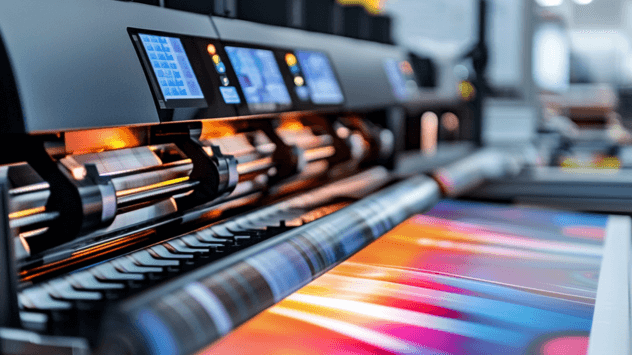
Digital printing is becoming increasingly popular among businesses for various reasons. A notable benefit of this system is its flexibility. Since digital printing uses digital files, it’s incredibly easy to change designs or print variable data, such as different customer names, without having to set up an entirely new printing process.
Digital printing is also faster and more cost-effective for smaller print runs, making it the go-to choice for businesses that need to print marketing materials, promotional items, or custom products on a tight budget. Aside from producing high-quality images and vibrant colors, digital printing is one of the most cost-effective ways to print your documents, surpassing traditional methods.
Types of Digital Printing
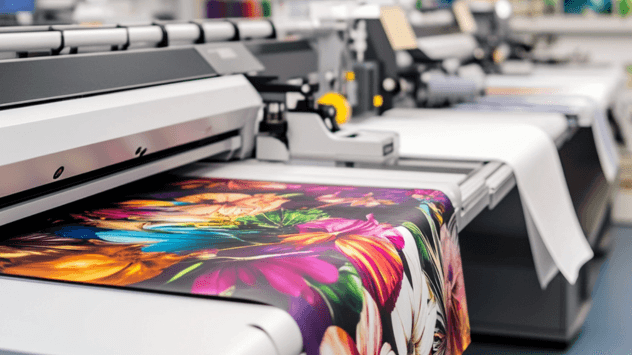
It is possible to print digitally in several different ways, each of which is suited to different needs:
-
- Inkjet printing: Ideal for high-quality photo prints and small batches.
-
- Laser printing: Great for high-speed, text-heavy printing.
-
- UV printing: Best for printing on non-porous surfaces and achieving durable, vibrant results.
-
- Electrophotography: Often used for printing labels and packaging.
The Printing Process
The digital printing process is simple and straightforward. It starts with a digital file containing the design to be printed. This file is sent directly to a digital printer, where it’s transferred onto the selected medium (paper, fabric, metal, etc.). The printer uses ink or toner to apply the design, and the job is done—no need for complicated setup or lengthy wait times.
Digital Printing Machines
Digital printing machines come in many shapes and sizes, from small desktop inkjet printers to large industrial presses. The right machine for your needs depends on your business’s requirements, including print volume, media type, and design complexity. Digital presses like the AccurioLabel 190 or Trojan T4 are built for businesses that need high-quality prints at scale, while smaller inkjet printers are great for personal use or small offices.
Digital Print Media and Products
Digital printing isn’t just about paper. The technology allows printing on fabrics, plastics, and metals, among other materials. The possibilities for digital print media are virtually endless. Whether you’re creating customized t-shirts, packaging, labels, or banners, digital printing makes it possible to achieve high-quality results on various surfaces.
Where Can I Buy Digital Printers and Digital Printing Presses?
If you’re looking for digital printers or digital printing presses, consider TCS Digital Solutions. We offer a range of digital presses, including the AccurioLabel 190, AccurioLabel 230, Trojan T4, and Trojan T5 digital presses. These presses are built for high-volume printing and deliver consistent, high-quality results. With our digital presses, you can print labels, packaging, or promotional materials to meet your needs.
Final Thoughts
Digital printing has revolutionized how businesses handle their printing needs. Due to its fast turnaround time and cost-effectiveness, digital printing is a great solution for businesses that require high-quality prints without the hassle. Whether you’re printing a batch of flyers or creating custom packaging, digital printing offers flexibility, speed, and efficiency.
If you have more questions related to digital printers and digital printing presses, feel free to contact our support team via email at orders@tcsdigitalsolutions.com or make a call at +1 (762) 208-6985 to get clarification for all your questions. TCS Digital Solutions Expert Support Team will be happy to assist you. To learn more about digital printers and presses, visit our blog section and get answers to all your questions.
-
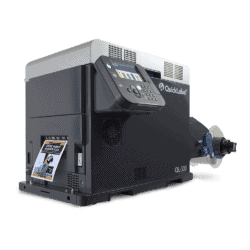 Quick Label QL-300 (120V) Toner CMYK Color Label Printer SKU: 1003-0000002$9,495.00
Quick Label QL-300 (120V) Toner CMYK Color Label Printer SKU: 1003-0000002$9,495.00
FREE SHIPPING over $199*
Orders before 12PM EST usually Ship Same Business Day -
 Epson ColorWorks C3500 Inkjet Color Label Printer SKU: C31CD54011 GTIN: 814420980046$2,419.00
Epson ColorWorks C3500 Inkjet Color Label Printer SKU: C31CD54011 GTIN: 814420980046$2,419.00
FREE SHIPPING over $199*
Orders before 12PM EST usually Ship Same Business Day -
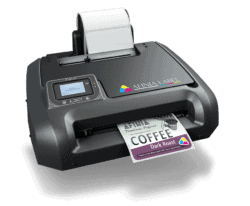 Afinia L301 Small Business Color Label Printer SKU: 26849 GTIN: 678621130057$1,249.00
Afinia L301 Small Business Color Label Printer SKU: 26849 GTIN: 678621130057$1,249.00
FREE SHIPPING over $199*
Orders before 12PM EST usually Ship Same Business Day


